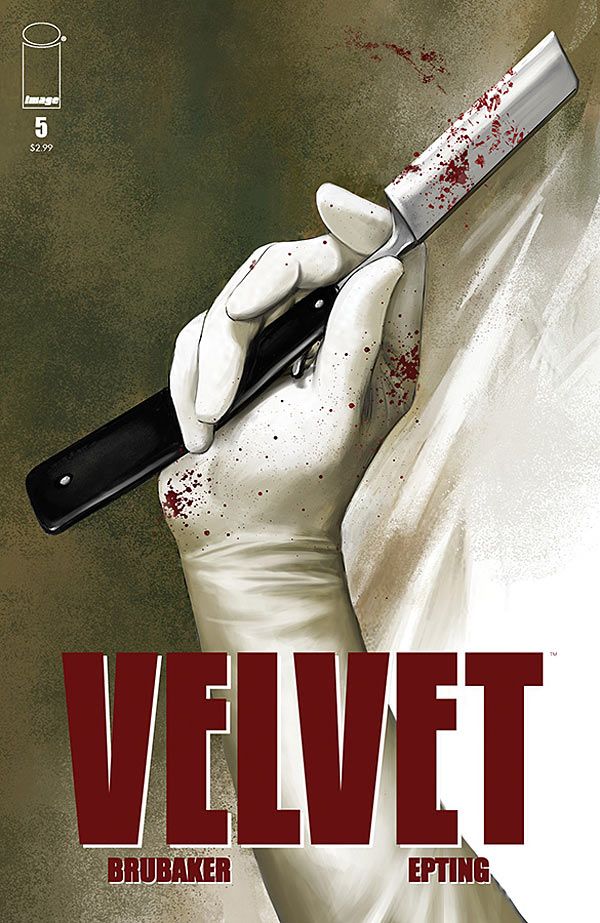"Velvet" #5 by Ed Brubaker and Steve Epting is structured as an extended flashback from the cliffhanger that concluded the last issue on the beach in Monaco. The creative team takes the story in a direction that feels more personal and intimate, and the results are wonderful -- deeper characterization and a new poignancy and bitterness that enrich the whole arc so far. There's less humor, but given how wry humor is so much a part of Velvet's usual voice, that's sure to return later.
Brubaker and Epting delve into Velvet's psychology and what it means to be a spy. Velvet's obviously well-suited in many respects for her former occupation, and she's shown enjoyment in flexing her old muscles. In "Velvet" #5, we get more about the darker side. In earlier issues, she talked about spies being from a world apart, but it was with some pride. Flashing back to her younger self, the dark side of that frame is that she's felt like an outsider always. Whether in her home country or on assignment, it didn't matter; events and feelings were seldom "real." Sincerity and "rawness" became precious to her in a life filled with professional lies and betrayals. Authenticity and the elusive nature of truth are thus revealed as central themes of the narrative.
Another theme comes from a different angle -- part of the flashback is about being a woman in what is traditionally a man's world. Velvet reveals her early hero-worship of a woman who later becomes her mentor. Through the character of Lady Pauline, readers lean more about Velvet, specifically about her admiration for heroism, daring and for work with meaning.
Brubaker's pacing allows for quieter moments, and the long stretch of silence after Velvet sneaks out her room and moves across rooftops in dark reinforces and pushes the reader to dwell on the description, "she wasn't just someone's wife." Brubaker and Epting arrange things so that the sentence is charged emotional force: yearning, defiance and ambition. It's a key to both Lady Pauline's identity and Velvet's. While young Velvet modeled herself on Pauline, the older Velvet wonders about Pauline's bad end and whether Pauline's "final lesson" was a cautionary tale to their kind.
Epting's art shines even more in the challenging parameters of "Velvet" #5. He moves back and forth within history with ease, drawing Velvet at different ages: schoolgirl, teenager, young woman and finally her current middle-aged and most interesting incarnation. Velvet goes through a wringer of emotions as she recalls two of the most important people in her life, both of whom she has lost. Epting depicts operatic emotions with clarity, without veering into melodrama.
Brubaker is able to pull of the same clever trick of making a plot twist feel fresh. The twist about Mockingbird still feels like a punch, even the double turnaround has been heavily foreshadowed, because he makes us live through it from Velvet's perspective. Epting's art and Brubaker's prose are exceptional in the full-page panel that is the climax of Velvet and Mockingbird's fight. It's epic and orchestral-feeling, beautiful and tragic.
"Velvet" has always had strong plotting, skillful art and an addictive combination of noir darkness and wry humor, but Brubaker and Epting have taken the story to a new level. "Velvet" #5 cracks open the heroine's heart without taking her down.

